The University of Chicago Press, Chicago 60637
The University of Chicago Press, Ltd., London
1999 by The University of Chicago
All rights reserved. Published 1999
Paperback edition 2000
Printed in the United States of America
17 16 15 14 13 12 7 8 9 10
ISBN-13: 978-0-226-66277-0
ISBN-10: 0-226-66277-2
ISBN-13: 978-0-226-92263-8 (e-book)
Peters, John Durham
Speaking into the air : a history of the idea of communication / John Durham Peters
p. cm.
Includes bibliographical references and index.
1. CommunicationPhilosophyHistory. I. Title.
P90.P388 1999
302.2'01dc21
98-50308
CIP
 The paper used in this publication meets the minimum requirements of the American National Standard for Information SciencesPermanence of Paper for Printed Library Materials, ANSI Z39.48-1992.
The paper used in this publication meets the minimum requirements of the American National Standard for Information SciencesPermanence of Paper for Printed Library Materials, ANSI Z39.48-1992.
Speaking into the Air
A History of the Idea of Communication
JOHN DURHAM PETERS
The University of Chicago Press
Chicago and London
To my mentors at four universities
HAL MILLER, LEN HAWES, DON ROBERTS, and SAM BECKER
So likewise ye, except ye utter by the tongue words easy to be understood, how shall it be known what is spoken? for ye shall speak into the air. There are, it may be, so many kinds of voices in the world, and none of them is without signification.
1 COR. 14:910 KJ
Written kisses dont reach their destination, rather they are drunk on the way by the ghosts. It is on this ample nourishment that they multiply so enormously. Humanity senses this and fights against it and in order to eliminate as far as possible the ghostly element between people and to create natural communication, the peace of souls, it has invented the railway, the motor car, the aeroplane. But its no longer any help, these are evidently inventions being made at the moment of crashing. The opposing side is so much calmer and stronger; after the postal service it has invented the telegraph, the telephone, the wireless. The spirits wont starve, but we will perish.
FRANZ KAFKA TO MILENA JESENSK
It is a question whether the obvious increase of overt communication is not constantly being corrected, as it were, by the creation of new obstacles to communication.
EDWARD SAPIR, COMMUNICATION
If communication bears the mark of failure or inauthenticity in this way, it is because it is sought as a fusion.
EMMANUEL LEVINAS, THE OTHER IN PROUST
Contents
Introduction: The Problem of Communication
When you take a word in your mouth you must realize that you have not taken a tool that can be thrown aside if it will not do the job, but you are fixed in a direction of thought which comes from afar and stretches beyond you.
HANS-GEORG GADAMER
Though humans were anciently dubbed the speaking animal by Aristotle, only since the late nineteenth century have we defined ourselves in terms of our ability to communicate with one another. The intellectual, ethical, and political implications of this revolutionary change in self-description have not been sufficiently traced. This book attempts to begin such a tracing. It is at once a critique of the dream of communication as the mutual communion of souls, a genealogy of sources and scenes of the pervasive sense that communication is always breaking down, and a reclamation of a way of thinking that avoids both the moral privilege of dialogue and the pathos of breakdown. I aim to trace the sources of modern ideas of communication and to understand why the modern experience of communication is so often marked by felt impasses.
Communication is one of the characteristic concepts of the twentieth century. It has become central to reflections on democracy, love, and our changing times. Some of the chief dilemmas of our age, both public and personal, turn on communication or communication gone sour. A diverse company of thinkersMarxists, Freudians, existentialists, feminists, anti-imperialists, sociologists, and philosophers of language, to name a fewhave dealt with the tragedy, comedy, or absurdity of failed communication. The difficulty of communication across various social boundariesgender, class, race, age, religion, region, nation, and languageconfronts us daily. But horizons of incommunicability loom beyond the merely human world as well, in the vexing question of communication with animals, extraterrestrials, and smart machines. Much in the centurys popular culture, especially science fiction, plays on how new symbol-processing machines allow for such dangers and delights as mind control or bodily transport. Likewise, much twentieth-century drama, art, cinema, and literature examines the impossibility of communication between people. One need only mention such playwrights as ONeill, Beckett, Sartre, Ionesco, Albee, or Havel or filmmakers such as Bergman, Antonioni, or Tarkovsky to evoke scenes of stammering face-to-face relations. Intellectuals of all kinds have likewise found in communication a topic with which to explore the outer limits of human connection and to weigh the demands we place on one another. Strother Martins line from the 1967 film Cool Hand Luke, starring Paul Newman, has assumed an epochal significance: What we have here is failure to communicate.
Communication is a registry of modern longings. The term evokes a utopia where nothing is misunderstood, hearts are open, and expression is uninhibited. Desire being most intense when the object is absent, longings for communication also index a deep sense of dereliction in social relationships. How did we get to the pass where such pathos attaches to the act of speaking with another person? How did it become possible to say that a man and woman are tuned to different frequencies?
The Historicity of Communication
My aim is not to explore the full variety of communication problems as reflected in the thought and culture of the twentieth century, but rather to tell the story of how communication became such trouble for us. My strategy follows a distinction Walter Benjamin made between modes of historical narration. One mode he called historicism: it regarded history as preconstituted and given, a continuous chain of causes and effects existing in a homogeneous space-time continuum. The past waited demurely for the historian to conjure it up. The scholar needed only to call (with sufficient patience and rigor) and history would respond, telling of things as they really were. The other modethe one Benjamin preferred, as I dosaw in every act of historical narration a constructivist principle. The historian did not wait for the past to speak its fullness but was an activist who brought ages into alignment with each other. Time, for Benjamin, is not just a continuum; it is full of ruptures and shortcutswormholes, we might say. Benjamin is thinking of the medieval notion of time as nunc stans, an eternal present (Jetztzeit in his German), but as is always true in his work, the mystical sources are not wifty dreaming but have shrewd relevance to concrete concerns. The present becomes intelligible as it is aligned with a past moment with which it has a secret affinity. There is a simultaneity not only across space, but across time as well. The Roman Republic and the French Revolution, though nearly two millennia apart, are more closely linked than 1788 and 1789, separated by only a year. Fashion illustrates such simultaneity: in some periods past styles (swing music, sideburns, bell-bottoms) are dead and off-limits, and in others they are suddenly current again. The past lives selectively in the present. History works not in a solely linear way but by being arranged into various constellations.
What these reflections mean for this book is that I try to illuminate the present by excavating several past moments with which I believe it has an affinity. There is little here that is directly about television, cinema, or the Internet, and not much beyond the mid-twentieth century. Yet late nineteenth-century studies in psychical research () might not have a demonstrable role in the historical semantics of communication, but they are good to think with. With brilliance and articulateness, they lay out arguments and concerns that in current thinking are often muffled at best. Such thinkers as these make our own thoughts more fluent. All history writing, of course, is a commentary on its own age, even (or especially) that which claims to be most true to the past. Benjamin simply makes the historians role in creating the alignments explicit.
Next page
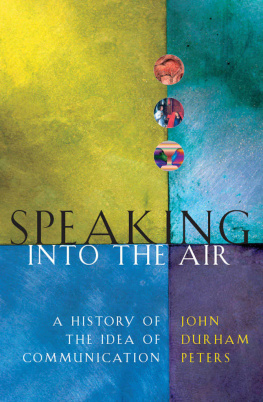

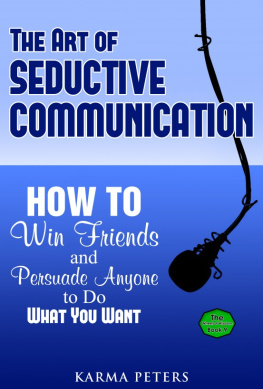


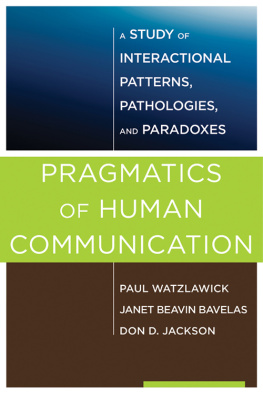
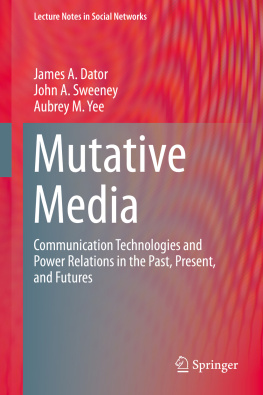
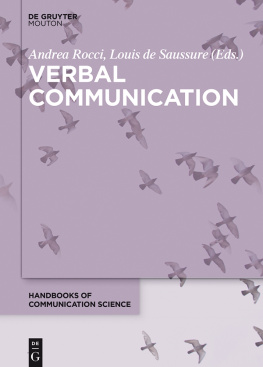
 The paper used in this publication meets the minimum requirements of the American National Standard for Information SciencesPermanence of Paper for Printed Library Materials, ANSI Z39.48-1992.
The paper used in this publication meets the minimum requirements of the American National Standard for Information SciencesPermanence of Paper for Printed Library Materials, ANSI Z39.48-1992.